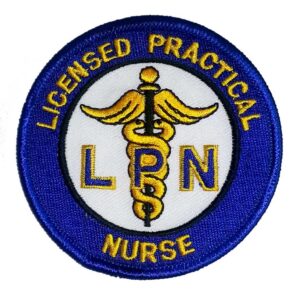By Rose O. Sherman, EdD, RN, NEA-BC, FAAN
 Many healthcare systems will be piloting new care delivery models that include the use of LPNs in 2024. Some systems, such as Community Health Systems, the Department of Veterans Affairs, and Dartmouth Hitchcock, have successfully been doing this for years.
Many healthcare systems will be piloting new care delivery models that include the use of LPNs in 2024. Some systems, such as Community Health Systems, the Department of Veterans Affairs, and Dartmouth Hitchcock, have successfully been doing this for years.
I had a long leadership history of working with LPNs during the 25 years I spent with the Department of Veterans Affairs. Many of the LPNs I worked with began their careers in the military as 91 Charlies or practical nurse specialists. Throughout my career in the VA, we practiced team nursing, and the LPN was an integral part of that team. Their scope of practice was governed by their state of licensure and the LPN clinical ladder that the VA had in place. Many of these LPNs were excellent clinicians and had strong critical thinking skills, which RNs depended on as a second set of eyes and ears.
Introducing any new role into an acute care delivery model needs to be very intentional. As one leader recently told me – some of my staff have been here for years and remember when we decided to no longer hire LPNs for acute care. They are challenging me about what has changed, especially considering the higher understanding of patients we have today. I have been telling them that two things have changed: 1) RNs are doing many things today that are within an LPN’s scope of practice, and 2) We have a severe RN shortage in our geographic area that is not going away any time soon and we must grow our own future RN workforce.
LPNs have primarily worked in long-term care or rehabilitation settings for the past two decades. They usually have an expanded scope of practice per state nurse practice acts in these settings. In long-term care, they can directly supervise patients’ care. This is not true in acute care settings where, in most but not all states, they must always be working under the direct supervision of an RN. Few RNs working today have experience supervising and delegating care. They may need to fully understand that when an LPN is assigned to work with them as a partner, the patients assigned to the LPN are considered the RN’s responsibility.
I recommend that any nurse leaders considering adding LPNs to their teams carefully consider the potential benefits and challenges. Groundwork needs to be in place to make new models of care successful. Nurse managers must champion the addition of LPNs and not resist it. The scope of practice of LPNs in your state must be carefully reviewed before developing position descriptions.
Some health systems are reluctant to use LPNs in acute care settings because their long-term care partners are already understaffed and rely on LPNs to supervise care. It may be a great choice, but maybe not. As with many other decisions we make in leadership, the unintended consequences of choices also need to be considered.
© emergingrnleader.com 2023
Bring the Nurse Leader Coach Workshop to Your Facility Virtually or Onsite Click Here for the Nurse Leader Coach WS Flyer
New Offering – Redesigning Care Delivery Strategic Planning Session for Your Leadership Team – Click Here for Flyer
Rebuilding Your Nursing Team in 2023: Coming Together after Falling Apart – Click Here for the Flyer
Now Available at Amazon and all Major Book Sellers

Other Programs/Books Your Leaders May Find Valuable
From Traditional Nurse Leader to Nurse Leader Coach – Click Here for the Flyer
For new leaders and emerging leaders, consider doing The Nuts and Bolts of Nursing Leadership Program – Click Here for the Nuts and Bolts Flyer Final
New Leader Development Option in 2023 – Team Coaching Designed to the Unique Needs of Your Organization Leader Coaching Brochure
Read the Nurse Leader Coach – Available at Amazon and Other Book Sellers
Recommended Book by the Association of Critical Care Nurses – The Nuts and Bolts of Nursing Leadership: Your Toolkit for Success


 LinkedIn
LinkedIn Instagram
Instagram